S&P 500 slips, but losses kept in check as Nvidia climbs ahead of results
Introduction & Market Context
Prudential Financial Inc (NYSE:PRU) presented its second quarter 2025 earnings results on July 31, 2025, reporting an adjusted operating income per share of $3.58, exceeding analyst expectations of $3.24. The insurance and financial services giant demonstrated solid performance across most business segments, though with some notable shifts in contribution patterns.
The company’s stock responded positively to the earnings beat, rising 2.52% to $104.34 in after-hours trading, despite a slight revenue miss of $13.5 billion against an expected $13.54 billion. Prudential (LON:PRU) continues to maintain a strong dividend yield of 5.31% and has increased its dividend for 16 consecutive years.
Quarterly Performance Highlights
Prudential reported pre-tax adjusted operating income of $1,665 million for Q2 2025, contributing to a year-to-date figure of $3,185 million. The company’s adjusted operating income per share reached $3.58 for the quarter and $6.87 year-to-date, while GAAP net income per share stood at $1.48 for Q2. The company maintained a strong adjusted operating ROE of 14.4% and an adjusted book value per share of $96.41.
As shown in the following financial highlights slide:
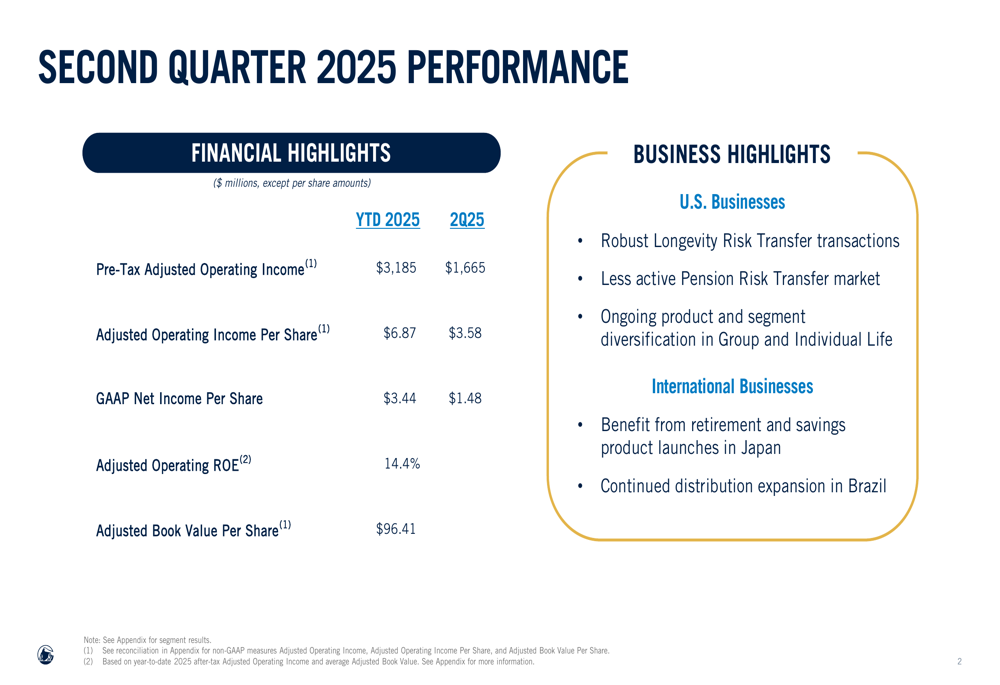
On the business front, Prudential highlighted robust Longevity Risk Transfer transactions, though noted a less active Pension Risk Transfer market. The company continued its product and segment diversification efforts in Group and Individual Life, while internationally benefiting from retirement and savings product launches in Japan and distribution expansion in Brazil.
Business Segment Analysis
Prudential’s performance varied across its three main business segments. PGIM, the company’s investment management arm, showed improvement with $229 million in Q2 2025 earnings, up from $206 million in Q2 2024, driven by higher asset management fees despite increased expenses. International Businesses also performed well with $761 million, up from $702 million a year earlier, benefiting from more favorable assumption updates, underwriting results, and higher spread income.
However, U.S. Businesses experienced a decline to $955 million from $1,023 million in Q2 2024, attributed to less favorable assumption updates and lower fee income, partially offset by improved underwriting results.
The following slide illustrates these segment performance shifts:
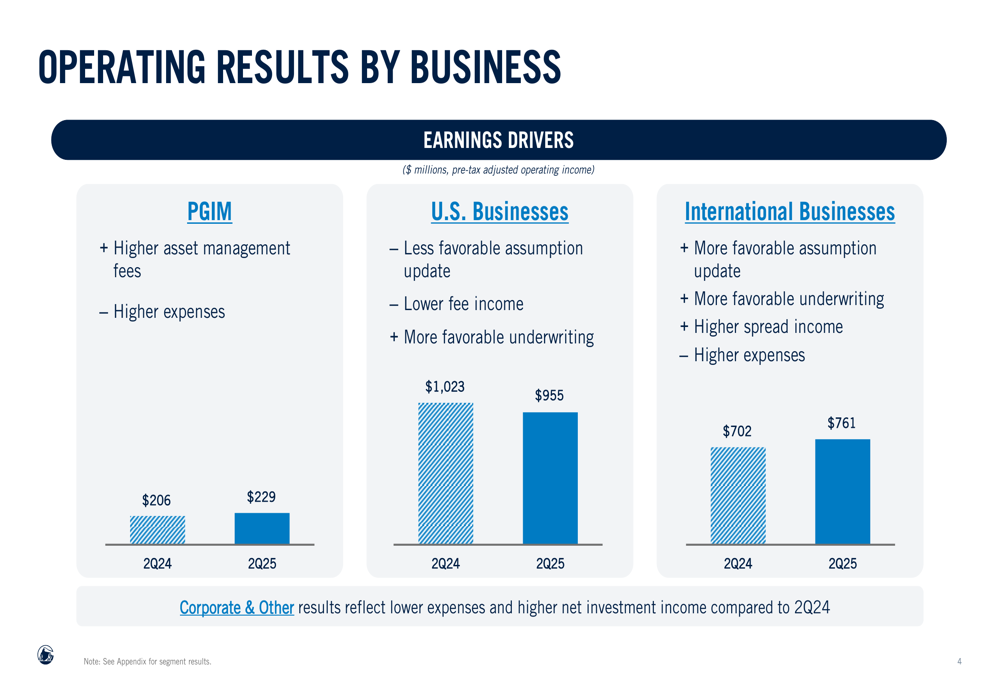
PGIM, which contributed 11% of trailing twelve months earnings, demonstrated strong investment performance with 87% of assets under management outperforming benchmarks over a three-year period. The segment also showed positive net flows in recent quarters, including $0.4 billion in Q2 2025.
As shown in this detailed breakdown of PGIM’s performance:
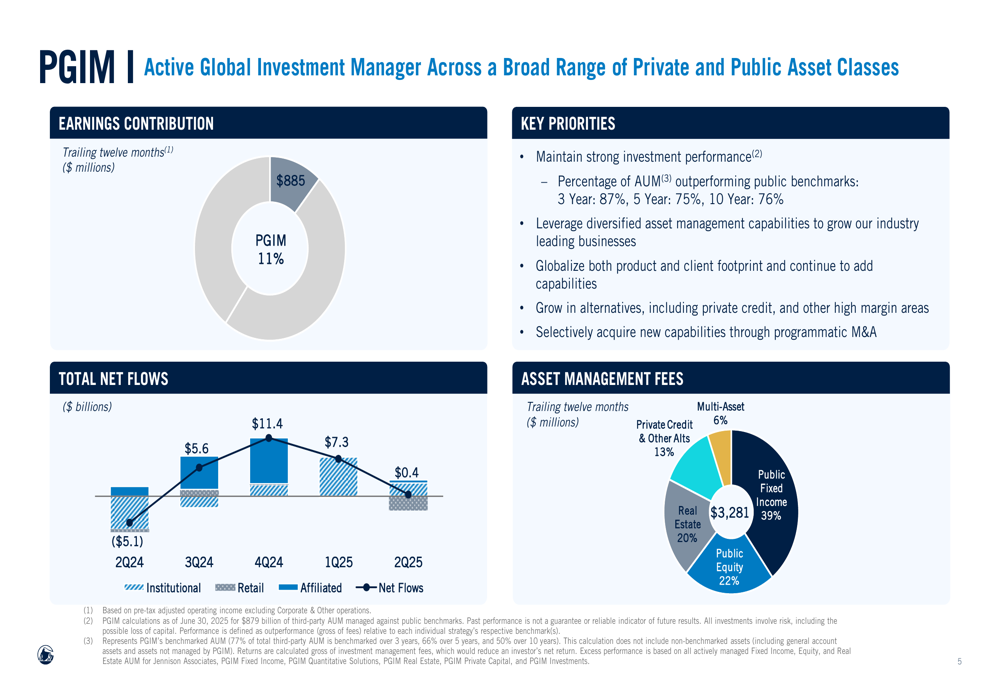
U.S. Businesses remained Prudential’s largest earnings contributor at 49% of trailing twelve months earnings, with a diversified earnings mix across net fees (28%), net spread (44%), and underwriting (28%). The segment reported solid year-to-date sales growth of 13% in Group Insurance, Institutional Retirement Strategies sales of $9 billion, and a 10% increase in Individual Life sales.
The following slide details the U.S. Businesses segment:
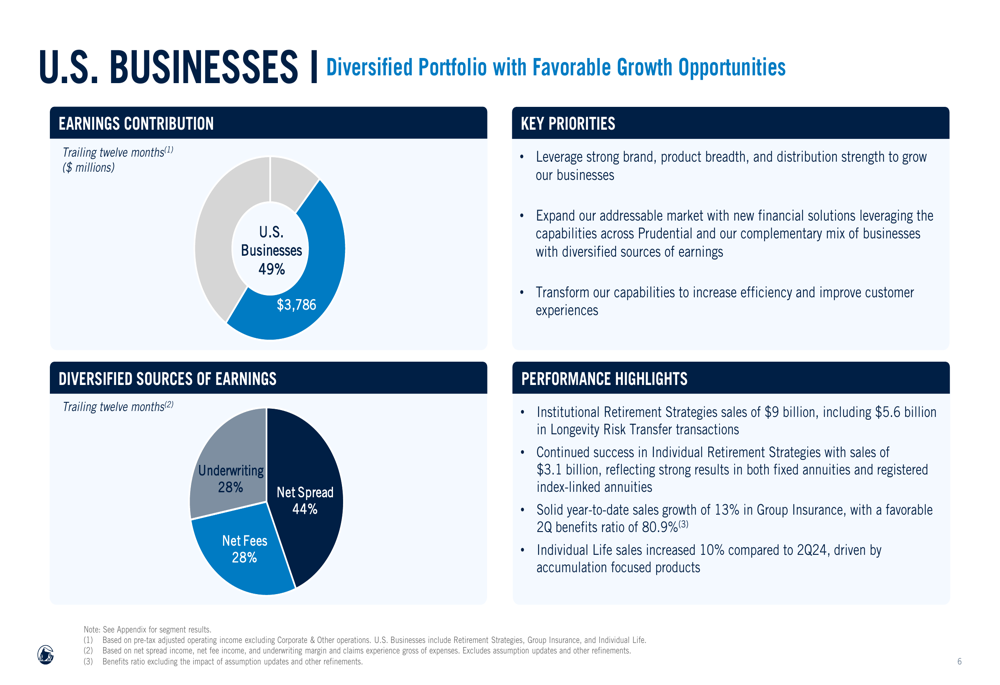
International Businesses, which accounted for 40% of trailing twelve months earnings, maintained strong performance with a focus on Japan where the company is a market leader. Sales remained relatively stable at $541 million in Q2 2025 compared to $521 million in Q2 2024, with a currency mix dominated by USD (58%) and JPY (25%).
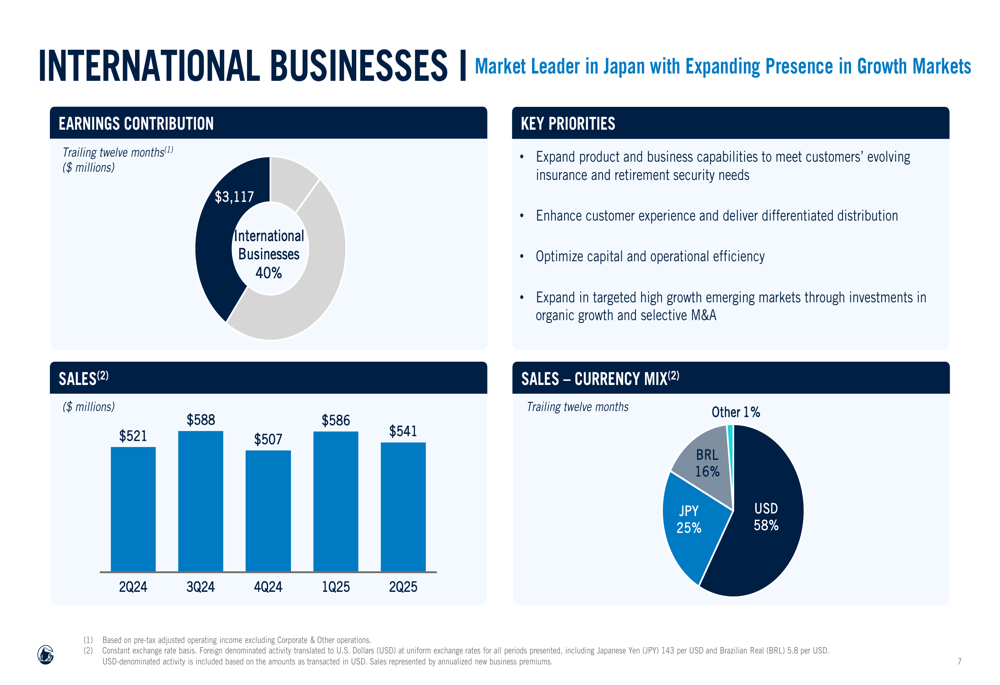
Strategic Initiatives
Prudential outlined three key priorities driving its strategy for sustainable, profitable growth: evolving and delivering on its strategy, improving execution, and fostering a high-performance culture. A notable achievement highlighted was the integration of PGIM’s multi-manager model into a unified business, including a $1 trillion public and private credit platform, aimed at driving operating efficiencies, cross-selling opportunities, and increased revenue.
CEO Andy Sullivan emphasized the company’s focus on teamwork and urgency in driving change during the earnings call, stating, "We are acting as a team with urgency to drive change and deliver outcomes each and every quarter."
Financial Strength & Investment Portfolio
Prudential demonstrated significant financial strength with highly liquid assets of $3.9 billion, exceeding its objective of maintaining over $3 billion. The company’s regulatory capital ratios remained in excess of objectives, consistent with AA ratings, including a PICA RBC ratio above 375% and Japan solvency margin ratios exceeding 700%.
The following slide highlights these financial strength metrics:
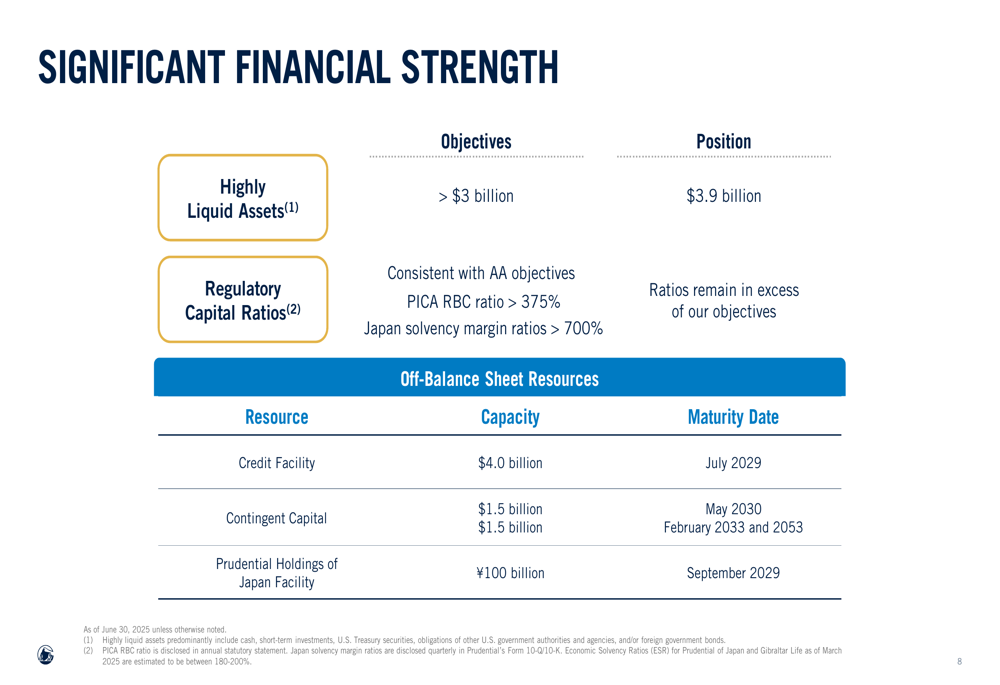
The company maintains a broadly diversified, high-quality investment portfolio of $387 billion, with corporate securities (public and private) comprising 48%, government securities 21%, and mortgage loans 14%. This portfolio benefits from PGIM’s expertise and follows a disciplined framework for credit management.
As illustrated in this portfolio composition slide:
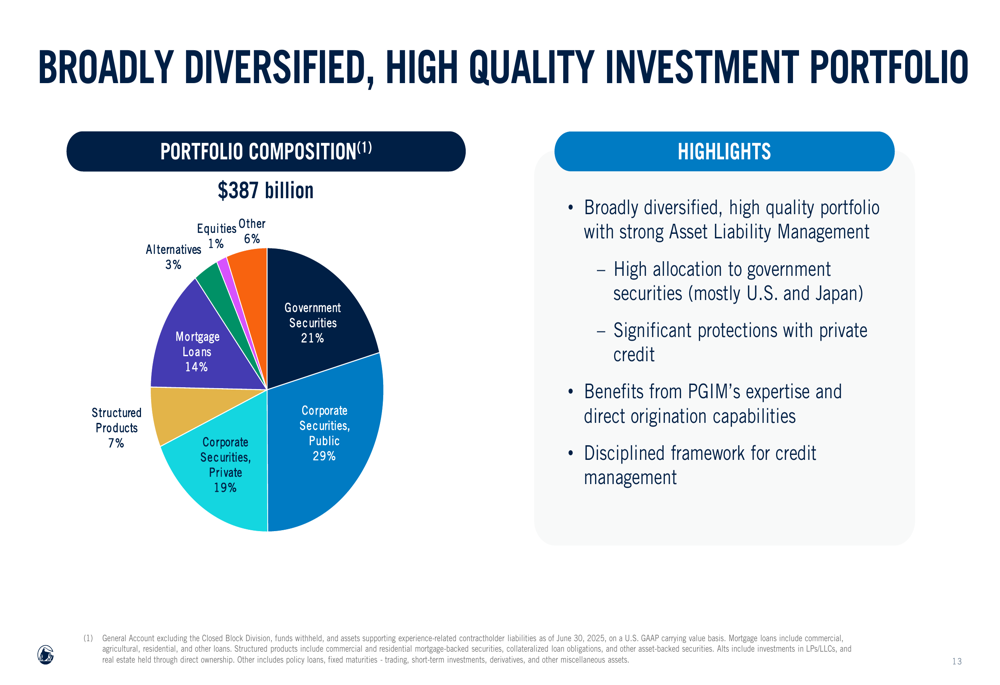
Forward-Looking Statements
Looking ahead, Prudential maintains a positive outlook with targeted EPS growth of 5-8% over the next three years. The company is focusing on diversifying its distribution channels and optimizing capital efficiency across its businesses.
However, some challenges were noted during the earnings call that weren’t prominently featured in the presentation slides. These include alternative investment income falling short by $60 million and an unfavorable impact of approximately $50 million from the annual assumption update. The company also faces increased competition in the Registered Index-Linked Annuity (RILA) market and uncertainty in the pension risk transfer market size.
CFO Janella Freas reiterated during the call that the company’s capital deployment priorities remain unchanged, focusing on maintaining financial strength while returning value to shareholders.
Prudential’s stock remains within its 52-week range of $90.38 to $130.55, with the current valuation reflecting investor confidence in the company’s ability to navigate mixed segment performance while delivering on its long-term growth objectives.
Full presentation:
This article was generated with the support of AI and reviewed by an editor. For more information see our T&C.
